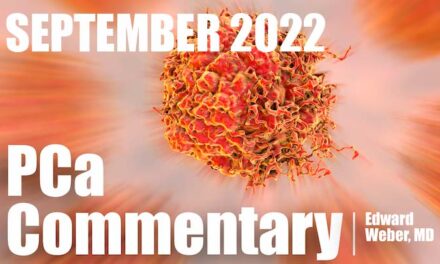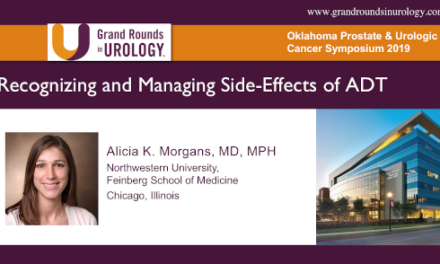ADT is the Building Block for Advanced Prostate Cancer Therapy
E. David Crawford, MD, Professor of Urology and Jack A. Vickers Director of Prostate Research at the University of California and Editor-in-Chief at Grand Rounds in Urology, leads a discussion on Androgen Deprivation Therapy (ADT) as the foundation for advanced prostate cancer treatment, supported by Verity Pharmaceuticals. Joining him are Scott B. Selinger, MD, President of the Advanced Urology Institute, Chair of the Advanced Urology Institute’s Advanced Prostate Cancer committee, and President-Elect of the Large Urology Group Practice Association (LUGPA), and David S. Morris, MD, FACS, President and Director of the Advanced Therapeutics Center for Urology Associates.
Dr. Crawford presents the group with data from the U.S. Prostate Cancer Conference indicating that just under a third of the experts present believed that the target for post-operative T levels should be 50 ng/dl or lower. Dr. Sellinger points out that 50 ng/dl or lower is the current target held by the FDA, but that active practitioners should be targeting 20 ng/dl or lower, which Dr. Crawford supports with data.
Dr. Crawford shifts the discussion from the ideal post-op T target to the importance of ADT scheduling, pointing out that the current acceptable dose delay is within two weeks. Dr. Crawford asks Dr. Morris for his input on the importance of a consistent administration schedule for interval dosing, and Dr. Morris acknowledges that the available medications provide varying levels of leeway between doses, though keeping the schedule as consistent as realistically possible is always best. Dr. Sellinger chimes in with real-world factors that impact clinicians’ ability to adhere to a strict dosing schedule.
Dr. Sellinger identifies that many of the studies which examined the impact of late dosing used an unrealistic 28-Day month cycle, pointing out that there are no months which consistently have only 28 days. Dr. Crawford follows up this point by presenting a review comparing the impact of late dosing on a 28-Day month against a 30-31-Day month, illustrating a significant spike in the rate of T breakthroughs when dosing was late in the 30-31-Day cycle. The group concludes that monitoring T is the most important factor in evaluating the effectiveness of ADT.
Dr. Crawford then asks the group if failure to monitor T could lead to an erroneous diagnosis of castrate-resistant prostate cancer. Dr. Morris and Dr. Sellinger agree that failure to monitor T could cause a clinician to misdiagnose castrate-resistant prostate cancer, especially when different ADT medications have differing effectiveness and administration procedures.
The group concludes with a discussion of EMBARK results, and the potential impact of newer therapies added to ADT. Dr. Morris focuses on how the EMBARK data suggests better treatment results from intensifying the therapy at first, then de-escalating the therapy once the patient becomes responsive. Dr. Sellinger highlights that many oncologists are still using monotherapy to treat prostate cancer, and expresses optimism at the expanding treatment options for prostate cancer.
Supported by

ABOUT THE AUTHOR
Researcher-physician E. David Crawford, MD, Jack A. Vickers Director of Prostate Research and Professor of Urology at the University of California, San Diego, has devoted his career in medicine to educating the public about men's health issues and finding effective techniques and procedures to address prostate cancer, the most common malignancy affecting men in the United States.





